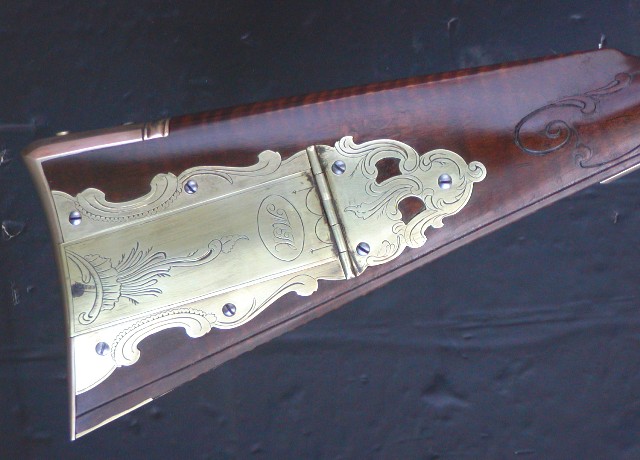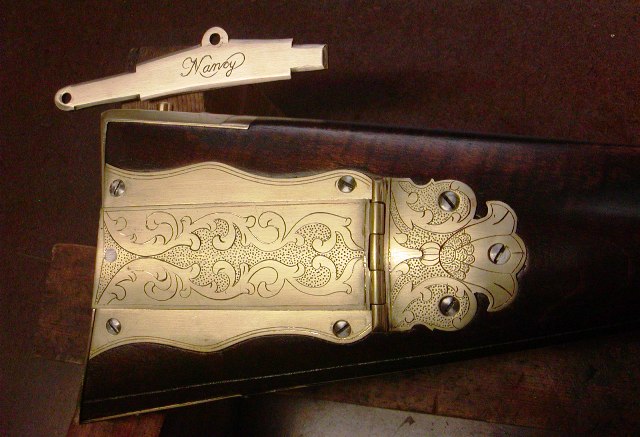I'm having a York-Style rifle built and got to thinking about stylistic choices, and particularly the big question: to include or not include a patch box on my build? I'm interested in building/owning a rifle that is both historically plausible and aesthetically pleasing by my own standards. I love a good patch box, but I also love having a nice big patch of beautiful exposed wood on a gun. So I've been looking around at historical precedent and artistic inspiration.
Now I realize and fully agree that the patch box, especially as it evolved throughout the "Golden Age" is one of the features that sets the American Longrifle apart from other guns. I also think they are often very striking and beautiful, and when done well enhance the beauty of the wood and the lines of the rifle. In some cases I think they are gaudy and distracting, and occasionally downright ugly (mostly on cheaper modern reproductions).
Reading past threads on this site and others, I've come across the claim that (to paraphrase): "Historically, longrifles have patch boxes. If you want a proper, historically accurate long rifle, you need a patch box." Exceptions are granted, especially when you get into the Tennessee backwoods, but generally this camp asserts that a "Kentucky," or a Pennsylvania long rifle without a patch box is missing something.
Here is my thesis: While non-patch box rifles were less common than rifles with patch boxes, they were not rare. I think they are under-represented in much of the literature on the topic. The decorated patch box is rightly considered a trademark feature of the American longrifle, but because of that, literature on the topic tends to leave out the examples without them. They were around.
For example, Kindig's "Thoughts on the Kentucky Rifle" - one of the foundational works on the long rifle - features no York rifles without patch boxes. In fact, while I didn't do a complete search, I don't think he has any rifles in that book without them. However, this makes sense, because Kindig's stated purpose was to examine the Kentucky Rifle as a work of art, and so naturally he focused on the most artistically expressive examples. However, a look through James Whisker's more focused work, "Gunsmiths of York County" shows at least nine York rifles without patch boxes that stretch from the Revolutionary period up to the end of the flint era. Shumway, in RCA vol. II includes a York rifle (#90) that he thinks is pre-revolutionary without a patch box. I left out any guns that had primarily fowler features (such as lacking a cheek rest or a grip extension of the trigger guard). I focused on York rifles because that's my area of interest at the moment and also the area where I have the most specialized literature.
My purpose here is not to start an argument, but to have a fun and interesting discussion, and hopefully to learn a thing or two. I am also not looking for someone to tell me whether or not to have a patchbox on my own rifle or rifles - I can make that choice for myself. I'm also not trying to put up an elaborate defense of leaving off a patch box from a build. I just was thinking about this, and thought it would be an interesting discussion.
I think I'm gonna post this at the ALR forum too to get that group's thoughts on it, too.










